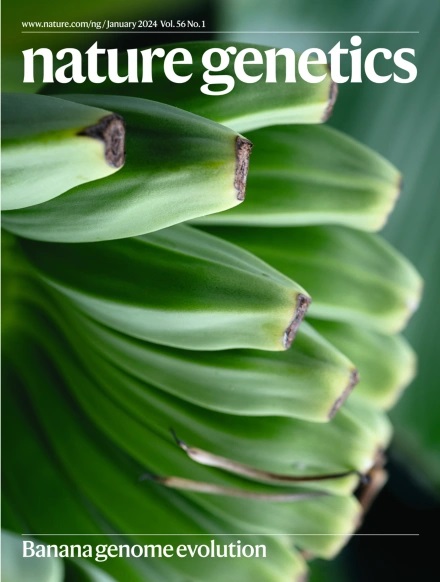Base editing of trinucleotide repeats that cause Huntington’s disease and Friedreich’s ataxia reduces somatic repeat expansions in patient cells and in mice
IF 31.7
1区 生物学
Q1 GENETICS & HEREDITY
引用次数: 0
Abstract
Trinucleotide repeat (TNR) diseases are neurological disorders caused by expanded genomic TNRs that become unstable in a length-dependent manner. The CAG•CTG sequence is found in approximately one-third of pathogenic TNR loci, including the HTT gene that causes Huntington’s disease. Friedreich’s ataxia, the most prevalent hereditary ataxia, results from GAA repeat expansion at the FXN gene. Here we used cytosine and adenine base editing to reduce the repetitiveness of TNRs in patient cells and in mice. Base editors introduced G•C>A•T and A•T>G•C interruptions at CAG and GAA repeats, mimicking stable, nonpathogenic alleles that naturally occur in people. AAV9 delivery of optimized base editors in Htt.Q111 Huntington’s disease and YG8s Friedreich’s ataxia mice resulted in efficient editing in transduced tissues, and significantly reduced repeat expansion in the central nervous system. These findings demonstrate that introducing interruptions in pathogenic TNRs can mitigate a key neurological feature of TNR diseases in vivo. Base editing of the pathogenic trinucleotide repeat expansions underlying Huntington’s disease and Friedreich’s ataxia introduces repeat interruptions that reduce somatic expansion in patient cells and mice.


对导致亨廷顿氏病和弗里德赖希共济失调的三核苷酸重复序列进行碱基编辑,可减少患者细胞和小鼠体内的体细胞重复扩增
三核苷酸重复(TNR)疾病是由扩大的基因组TNR引起的神经系统疾病,其以长度依赖的方式变得不稳定。CAG•CTG序列在大约三分之一的致病性TNR位点中发现,包括导致亨廷顿病的HTT基因。弗里德里希共济失调是最常见的遗传性共济失调,是由FXN基因GAA重复扩增引起的。在这里,我们使用胞嘧啶和腺嘌呤碱基编辑来减少患者细胞和小鼠中tnr的重复。碱基编辑器在CAG和GAA重复序列上引入G•C>;A•T和A•T>;G•C中断,模仿人类自然存在的稳定的非致病性等位基因。AAV9在Htt中提供优化的碱基编辑器。Q111亨廷顿氏病和YG8s弗里德赖希共济失调小鼠在转导组织中进行了有效的编辑,并显著减少了中枢神经系统中的重复扩增。这些发现表明,在体内引入致病性TNR的中断可以减轻TNR疾病的一个关键神经学特征。
本文章由计算机程序翻译,如有差异,请以英文原文为准。
求助全文
约1分钟内获得全文
求助全文
来源期刊

Nature genetics
生物-遗传学
CiteScore
43.00
自引率
2.60%
发文量
241
审稿时长
3 months
期刊介绍:
Nature Genetics publishes the very highest quality research in genetics. It encompasses genetic and functional genomic studies on human and plant traits and on other model organisms. Current emphasis is on the genetic basis for common and complex diseases and on the functional mechanism, architecture and evolution of gene networks, studied by experimental perturbation.
Integrative genetic topics comprise, but are not limited to:
-Genes in the pathology of human disease
-Molecular analysis of simple and complex genetic traits
-Cancer genetics
-Agricultural genomics
-Developmental genetics
-Regulatory variation in gene expression
-Strategies and technologies for extracting function from genomic data
-Pharmacological genomics
-Genome evolution
 求助内容:
求助内容: 应助结果提醒方式:
应助结果提醒方式:


